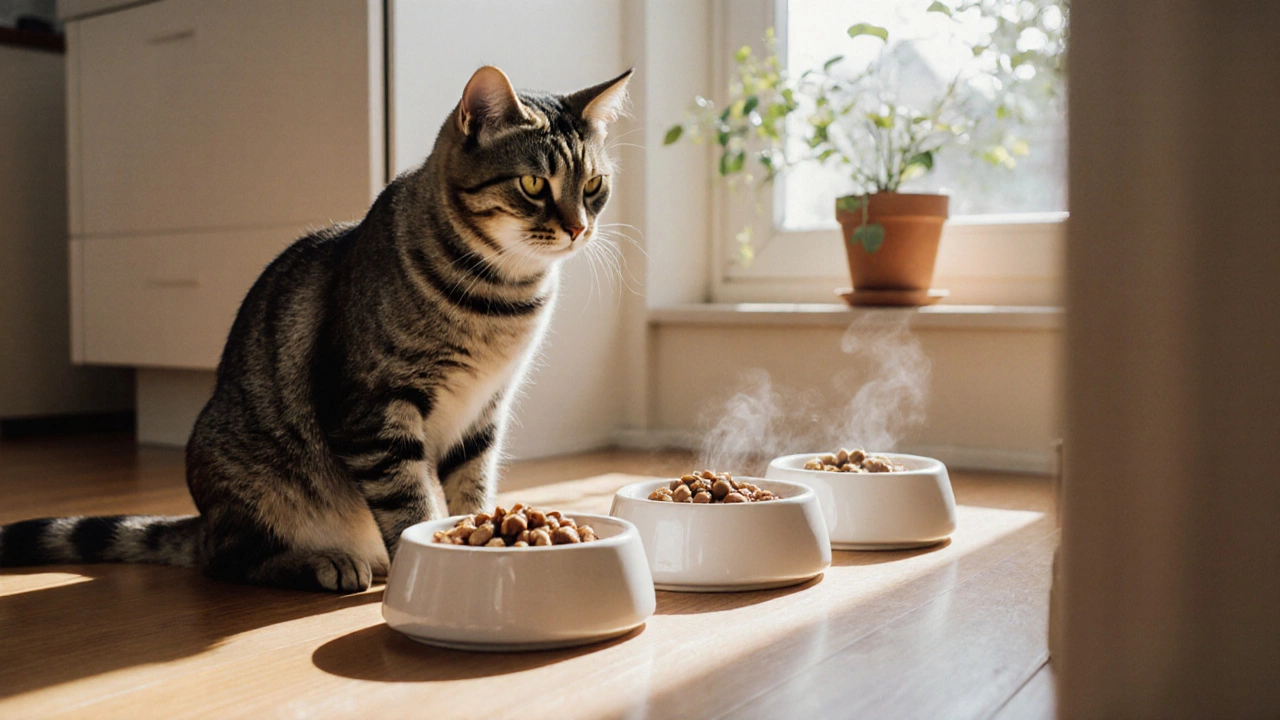How Often to Feed a Cat – Getting the Timing Right
When talking about Cat Feeding Frequency, the recommended intervals and portion sizes for feeding a domestic cat. Also known as how often to feed a cat, it sets the stage for healthy weight, steady energy, and a happy mood. The right schedule isn’t just a rule; it’s a balance of a cat’s natural hunting instincts, metabolism, and the type of food you serve.
Key factors that shape a cat’s feeding plan
First, Wet Cat Food, a high‑moisture diet that mimics prey and boosts hydration adds water to every bite, which can reduce the need for separate drinking and help kidney health. Pair that with Dry Cat Food, a low‑moisture kibble that’s calorie‑dense and convenient for free‑feeding, and you have two very different tools for controlling intake. How often to feed a cat often depends on which tool you lean on: wet meals usually work best in two to three measured servings a day, while dry kibble can be left out for shorter periods if you’re monitoring portion size.
Another essential piece is Cat Nutrition, the balance of proteins, fats, vitamins, and minerals a cat needs to thrive. Cats are obligate carnivores, so high‑quality animal protein is non‑negotiable. When you schedule meals, you’re also deciding how often those proteins hit the stomach, which directly influences muscle maintenance and overall health. A typical adult cat benefits from 20‑30 grams of protein per kilogram of body weight each day, split across its meals. Kids or senior cats may need adjustments, but the principle stays the same: consistent protein delivery supports steady growth or graceful aging.
Finally, think about the Pet Feeding Schedule, the daily routine of meal times, portion control, and monitoring. A schedule that matches a cat’s natural crepuscular activity—active at dawn and dusk—helps align hunger with play, reducing over‑eating and boredom. For example, offering a small wet meal in the morning, a dry snack mid‑day, and a larger wet dinner in the evening mirrors the hunt‑rest‑hunt pattern many felines exhibit in the wild. This routine also makes it easier to spot changes in appetite, which can be early signs of illness.
Putting these pieces together, you’ll see three clear semantic connections: cat feeding frequency determines nutrition balance, nutrition influences weight management, and the feeding schedule shapes overall health. Below you’ll find a curated set of articles that dive deeper into each angle—whether you’re curious about wet versus dry choices, want a step‑by‑step feeding guide, or need tips for adjusting portions as your cat ages. Use the insights here to build a feeding plan that fits your cat’s lifestyle and keeps those whiskers twitching with contentment.

How Many Times Should You Feed a Cat? Expert Guide to Feeding Frequency
Learn the ideal number of meals per day for kittens, adults, and senior cats, how food type affects timing, and practical steps to set a healthy feeding schedule.
View more